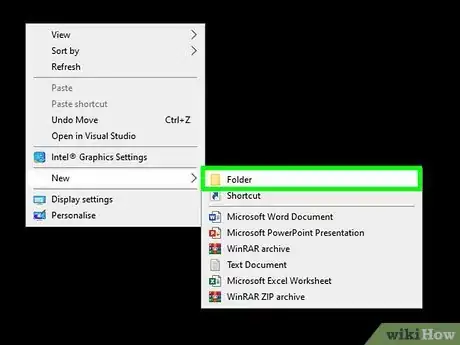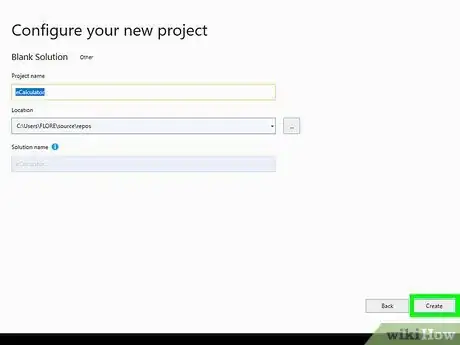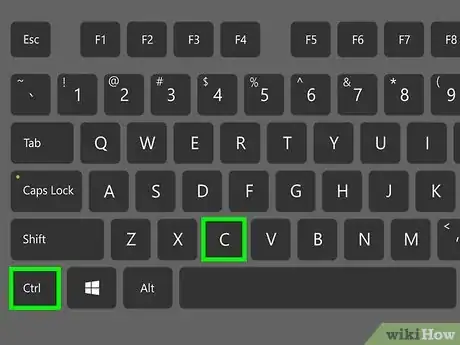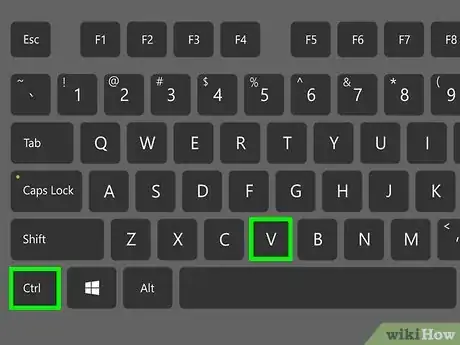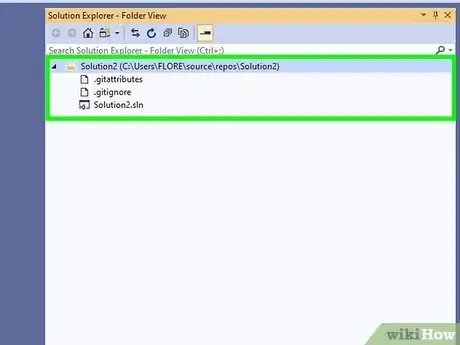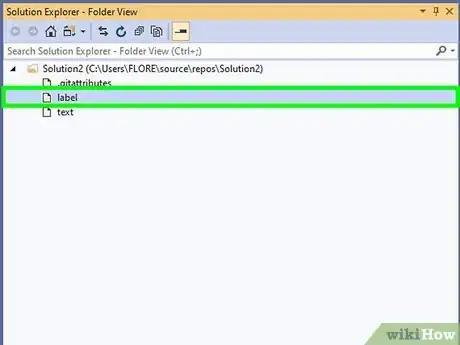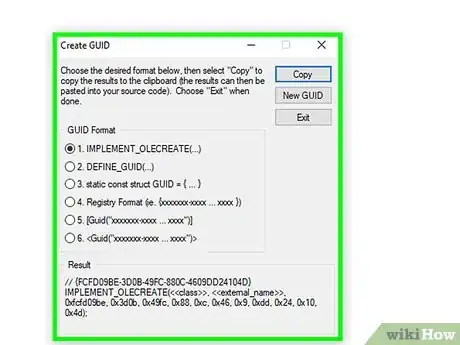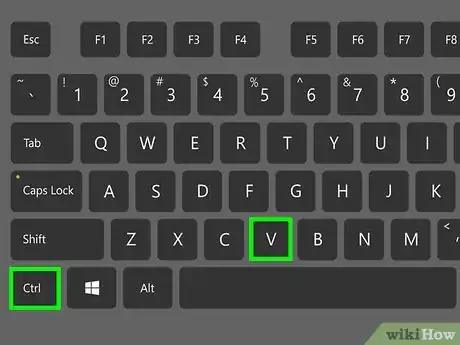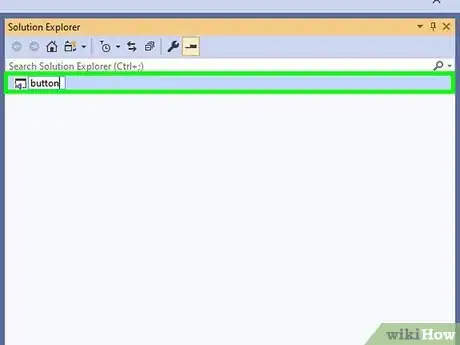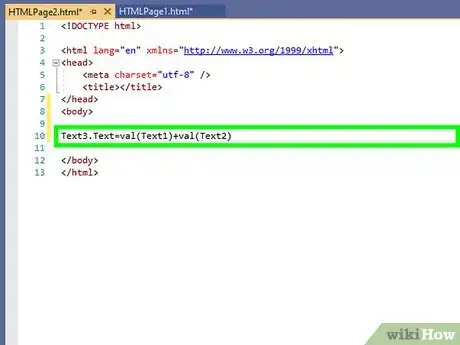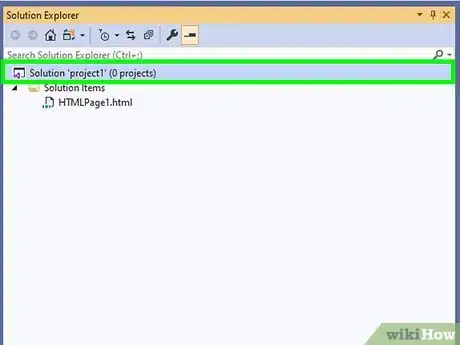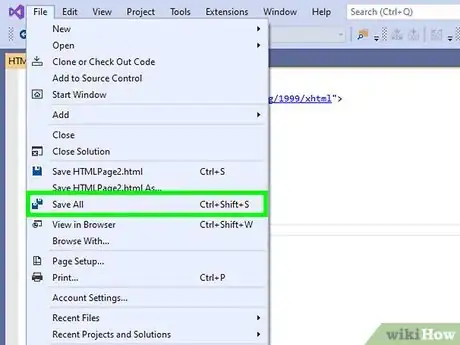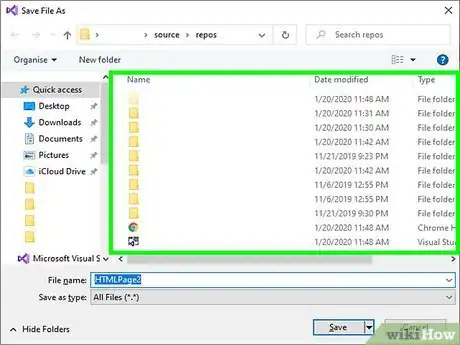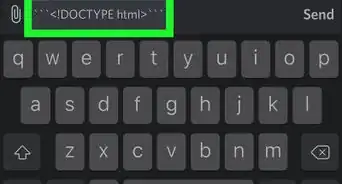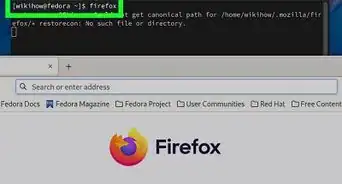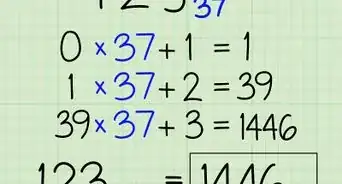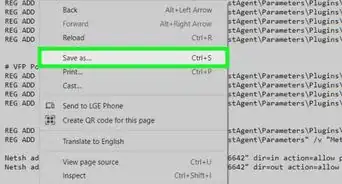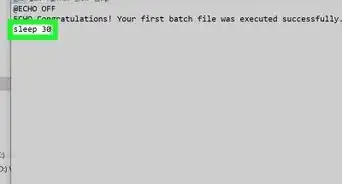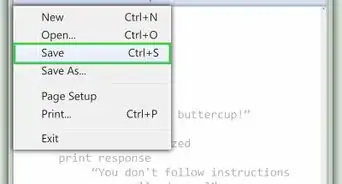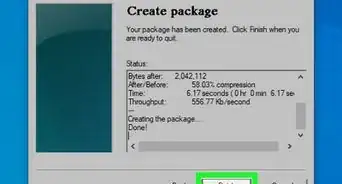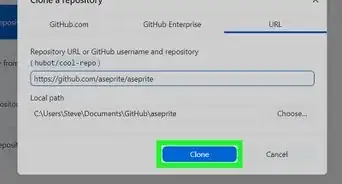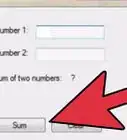This article was co-authored by wikiHow staff writer, Jack Lloyd. Jack Lloyd is a Technology Writer and Editor for wikiHow. He has over two years of experience writing and editing technology-related articles. He is technology enthusiast and an English teacher.
The wikiHow Tech Team also followed the article's instructions and verified that they work.
This article has been viewed 751,684 times.
Learn more...
This wikiHow teaches you how to use Microsoft's Visual Basic 6.0 to create a simple calculator that can add, subtract, multiply, and divide. Keep in mind that Visual Basic 6.0 is no longer used by modern computers, so you'll need to have it installed and running on your computer in order to be able to use it.
Steps
Creating a New Project
-
1Create a new folder for your calculator. To house all of your calculator's necessary files, do the following:
- Go to the location in which you want to save your VB6 calculator.
- Right-click a blank space.
- Select New in the drop-down menu.
- Click Folder.
- Type in Calculator and press ↵ Enter.
-
2Open Visual Basic 6. This will bring up the project selection page.Advertisement
-
3Click Standard EXE. It's in the project selection field.
-
4Click Open. This is in the bottom-right corner of the window. Doing so creates a new project.
Creating the Calculator's Input Fields
-
1Open the "Text Box" tool. Click the ab button on the left-hand side of the window.
-
2Create a text box. Click and drag your mouse down and right to draw an outline of the text box, then release the mouse button when the text box is the proper size.
- Ideally, your text box will be significantly longer than it is tall.
-
3Copy the text box. Click once the text box to select it, then press Ctrl+C to copy it.
-
4Paste in the text box twice. Press Ctrl+V twice to do so. You should see your pasted text boxes appear in the upper-right side of the page.
- If prompted to create a new control array after pasting in a text box, click No.
-
5Arrange the text boxes in a stack. Click and drag the text box in the top-left side of the page down to the bottom slot, then move the second text box from the top-left side of the page into the middle slot. You should now have a stack of three text boxes.[1]
- The order in which you do this is important; if you place the text box you pasted second in the middle, it will cause your coding later to malfunction.
-
6Remove the text boxes' default text. To do so:
- Click a text box.
- Click the text field to the right of the "Text" heading in the "Properties" pane on the right side of the window.
- Press Delete.
- Repeat with the other two text boxes.
-
7Create three label boxes. Click the A button in the left-hand toolbar, then do the following:
- Resize the label box to your preferred size.
- Select the label box, then copy it.
- Paste twice the label box.
-
8Place the label boxes to the left of the text boxes. Click and drag each label box to sit to the left of each text box.
-
9Edit the top label box's caption. To do so:
- Click the top label box.
- Click the text box to the right of the "Caption" heading in the "Properties" pane on the right side of the window.
- Type in Number 1.
-
10Edit the other two label boxes' captions. You'll label them like so:
- Click the middle label box, then change its caption to Number 2.
- Click the bottom label box, then change its caption to Result.
-
11Make the label boxes transparent. This isn't necessary, but it will make your calculator more visually appealing:
- Select a label box.
- Click the "BackStyle" drop-down box in the "Properties" pane.
- Click Transparent in the drop-down menu.
-
12Title your calculator. To change the text that appears at the top of the calculator's window when you run it, do the following:
- Click a blank space on the form.
- Click the "Caption" header's text box in the "Properties" pane.
- Type in Simple Calculator (or whatever you want to name the calculator).
Creating the Calculator's Buttons
-
1Click the "Button" tool icon. It's a grey box icon below the ab option in the left-hand toolbar.
-
2Create a square button. Click and drag in a diagonal direction until you see a small square outline appear, then release the mouse button. You should see a grey button display on the form.
-
3Copy the button. Select the button you just created, then press Ctrl+C.
-
4Paste the button three times. Press Ctrl+V three times to do so. This will create a total of four buttons on your project.
- You may have to click No when prompted each time after pressing Ctrl+V.
-
5Arrange the buttons below the calculator's input fields. Click and drag each button so that you have a row of them below the "Result" text box.
-
6Edit the buttons' captions. You'll do this by changing the text for each button's "Caption" heading in the "Properties" pane on the right side of the window:
- Click the left-most button, then change its "Caption" text to +.
- Click the next button to the right, then change its "Caption" text to -.
- Click the next button to the right, then change its "Caption" text to x (or *).
- Click the right-most button, then change its "Caption" text to /.
Adding the Calculator's Code
-
1Double-click the + button. Doing so opens a code console.
-
2Enter the addition code. Type the following code into the console, directly below the "Private Sub" text and directly above the "End Sub" text.
Text3.Text=val(Text1)+val(Text2)
-
3Return to the calculator form. Double-click the Form1 option under the "Project1" heading on the right side of the page to do so.
-
4Double-click the - button. This will re-open the console.
-
5Enter the subtraction code. Type the following into the console:
Text3.Text=val(Text1)-val(Text2)
-
6Double-click the x or * button. This will re-open the console.
-
7Enter the multiplication code. Type the following into the console:
Text3.Text=val(Text1)*val(Text2)
-
8Double-click the / button. This will re-open the console.
-
9Enter the division code. Type the following into the console:
Text3.Text=val(Text1)/val(Text2)
Saving Your Calculator
-
1Save your project. Do the following:
- Press Ctrl+S.
- Select your "Calculator" folder as the save location.
- Click Save.
-
2Click File. It's in the upper-left side of the window. A drop-down menu will appear.
-
3Click Make [name] exe…. This option is in the drop-down menu. Doing so re-opens the "Save As" window.
-
4Enter a file name. Type "calculator" or something similar into the "File name" text box.
-
5Select your "Calculator" folder. Go to the folder in which you saved your "Calculator" folder, then click the "Calculator" folder to select it.
-
6Click OK. It's in the bottom-right corner of the window. This will save your calculator as an executable (EXE) file in the "Calculator" folder.
-
7Create a shortcut to your calculator's EXE file. You can create a desktop shortcut to your calculator's EXE file by doing the following:
- Open the "Calculator" folder.
- Right-click the EXE file.
- Select Send to in the drop-down menu.
- Click Desktop (create shortcut).
Community Q&A
-
QuestionHow do I code a calculator in VB?
 Community AnswerStart by designing the interface of your calculator, then you start your coding by declaring the values you are using, such as a,b,c, for each command you have open in your interface. a=val(Text1.Text) b=val(Text2.Text) c=a+b Text3.Text=c a= the value you enter in text1(text box) b= the value you enter in text2(text box) c= the label to display your answer
Community AnswerStart by designing the interface of your calculator, then you start your coding by declaring the values you are using, such as a,b,c, for each command you have open in your interface. a=val(Text1.Text) b=val(Text2.Text) c=a+b Text3.Text=c a= the value you enter in text1(text box) b= the value you enter in text2(text box) c= the label to display your answer -
QuestionHow can I become an expert in programming?
 Community AnswerPractice as much as possible and always challenge yourself to learn more and more complex things.
Community AnswerPractice as much as possible and always challenge yourself to learn more and more complex things. -
QuestionAny number divide by 0 is = 1? How I can fix that?
 Community AnswerYou might want to code in an error message because officially, dividing by 0 is UNDEFINED.
Community AnswerYou might want to code in an error message because officially, dividing by 0 is UNDEFINED.
Warnings
- Visual Basic 6.0 is no longer updated on modern computers, so you may encounter errors if attempting to install or use it on a 64-bit system (e.g., Windows 10).⧼thumbs_response⧽
